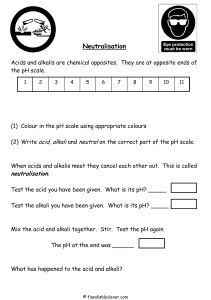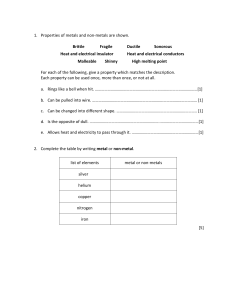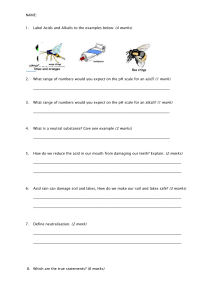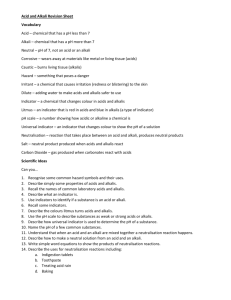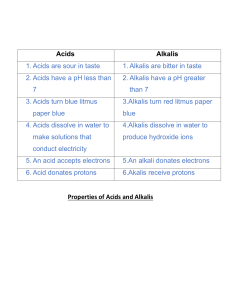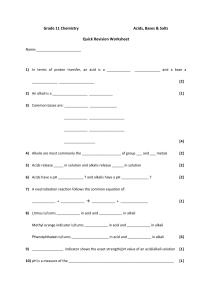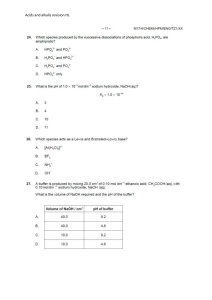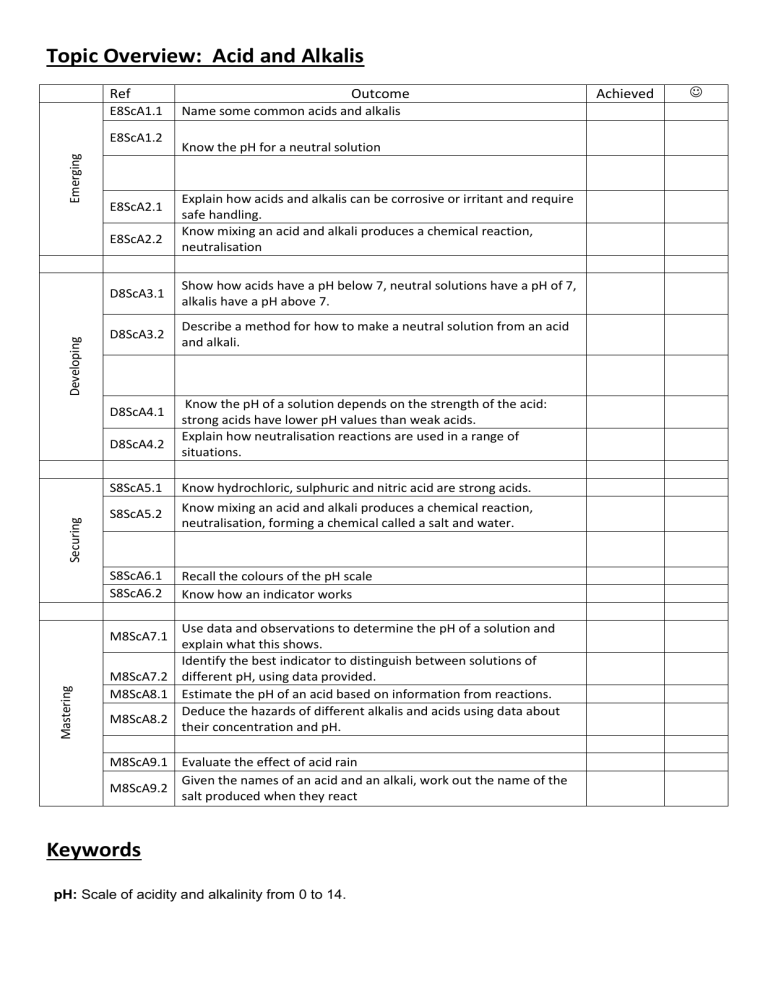
Topic Overview: Acid and Alkalis Ref E8ScA1.1 Emerging E8ScA1.2 E8ScA2.1 Developing E8ScA2.2 Name some common acids and alkalis Know the pH for a neutral solution Explain how acids and alkalis can be corrosive or irritant and require safe handling. Know mixing an acid and alkali produces a chemical reaction, neutralisation D8ScA3.1 Show how acids have a pH below 7, neutral solutions have a pH of 7, alkalis have a pH above 7. D8ScA3.2 Describe a method for how to make a neutral solution from an acid and alkali. D8ScA4.1 D8ScA4.2 S8ScA5.1 Securing Outcome S8ScA5.2 S8ScA6.1 S8ScA6.2 Know the pH of a solution depends on the strength of the acid: strong acids have lower pH values than weak acids. Explain how neutralisation reactions are used in a range of situations. Know hydrochloric, sulphuric and nitric acid are strong acids. Know mixing an acid and alkali produces a chemical reaction, neutralisation, forming a chemical called a salt and water. Recall the colours of the pH scale Know how an indicator works Use data and observations to determine the pH of a solution and explain what this shows. Identify the best indicator to distinguish between solutions of M8ScA7.2 different pH, using data provided. M8ScA8.1 Estimate the pH of an acid based on information from reactions. Deduce the hazards of different alkalis and acids using data about M8ScA8.2 their concentration and pH. Mastering M8ScA7.1 M8ScA9.1 Evaluate the effect of acid rain Given the names of an acid and an alkali, work out the name of the M8ScA9.2 salt produced when they react Keywords pH: Scale of acidity and alkalinity from 0 to 14. Achieved Indicators: Substances used to identify whether unknown solutions are acidic or alkaline. Base: A substance that neutralises an acid - those that dissolve in water are called alkalis. Concentration: A measure of the number of particles in a given volume.
